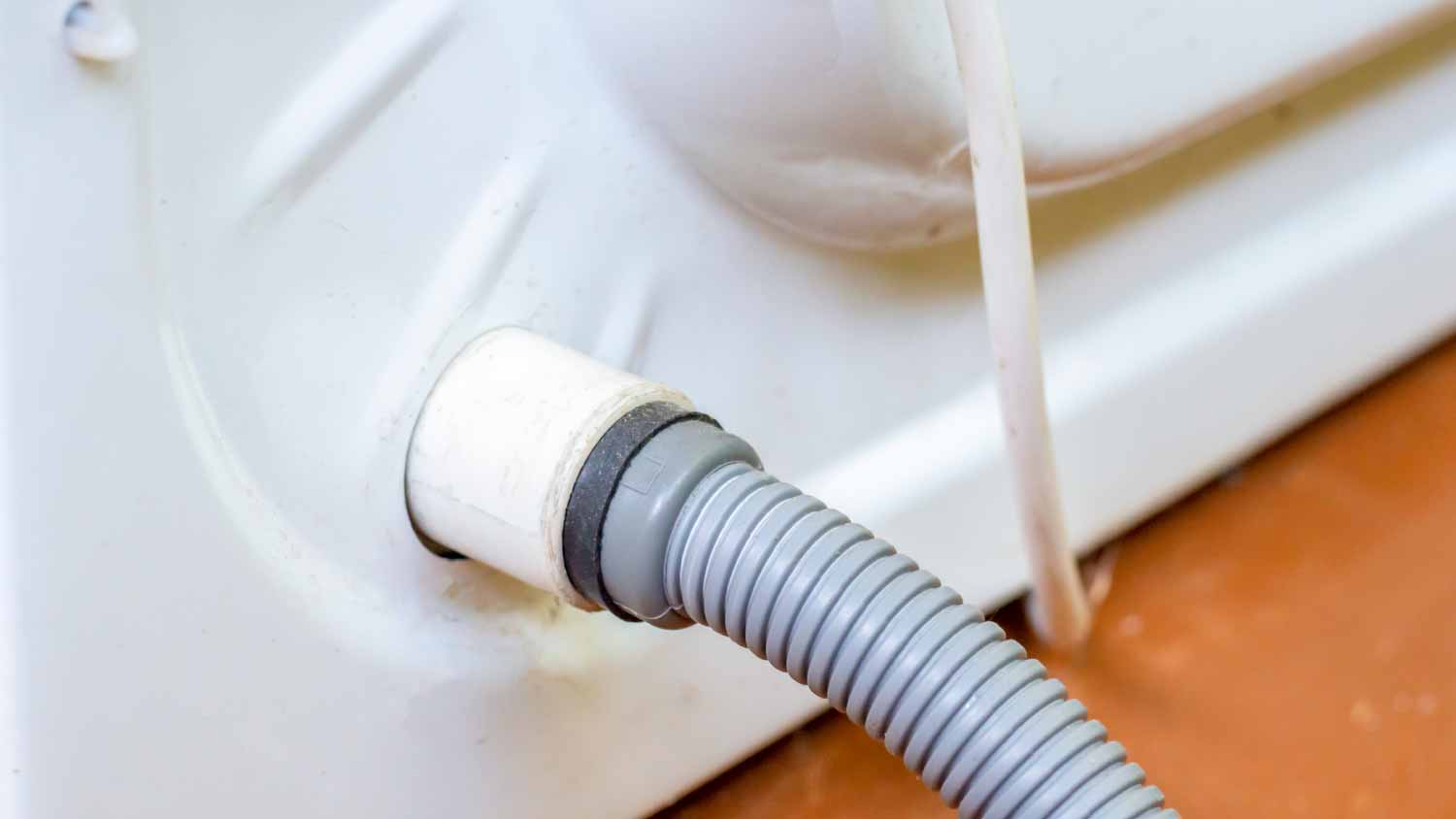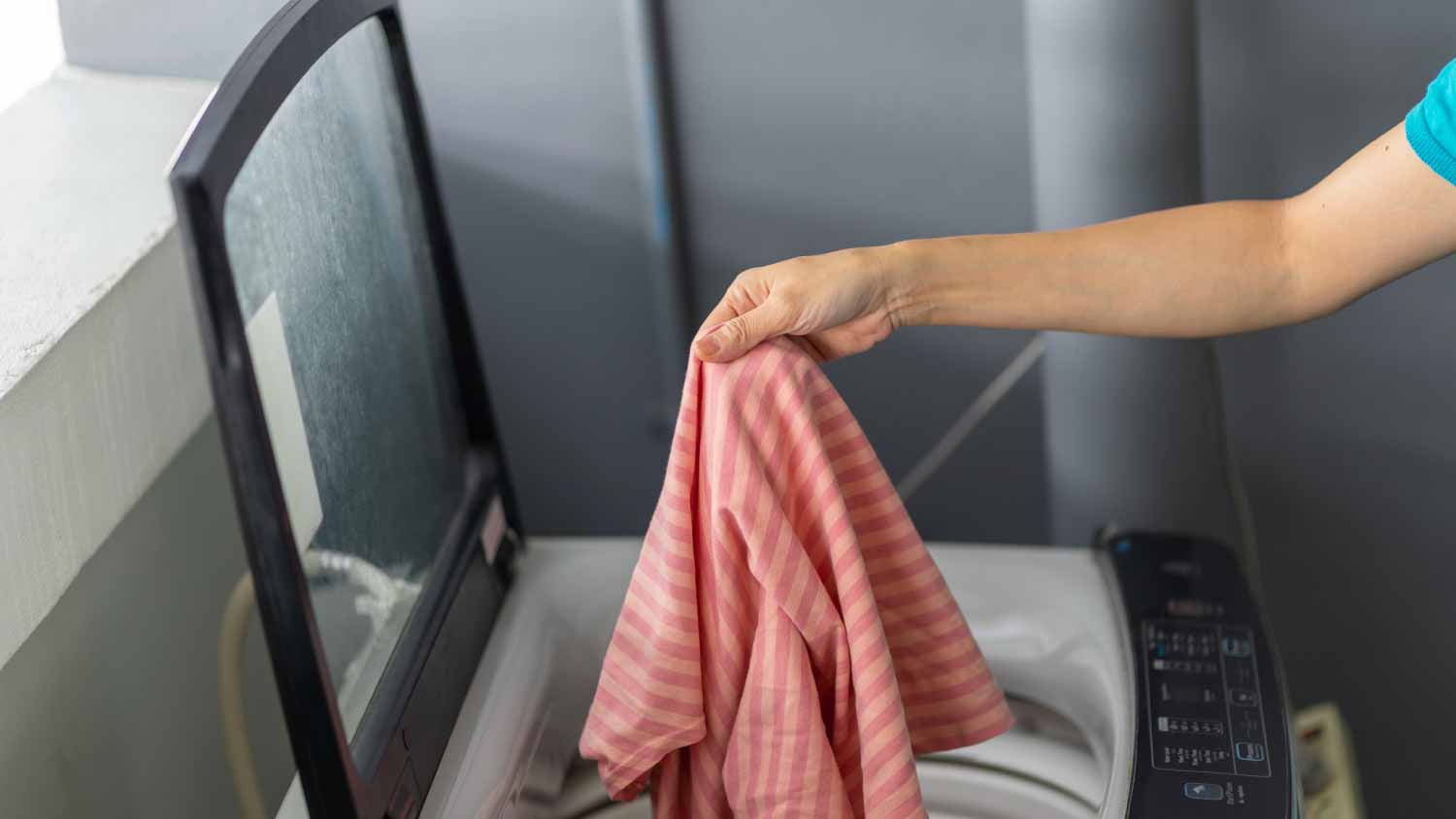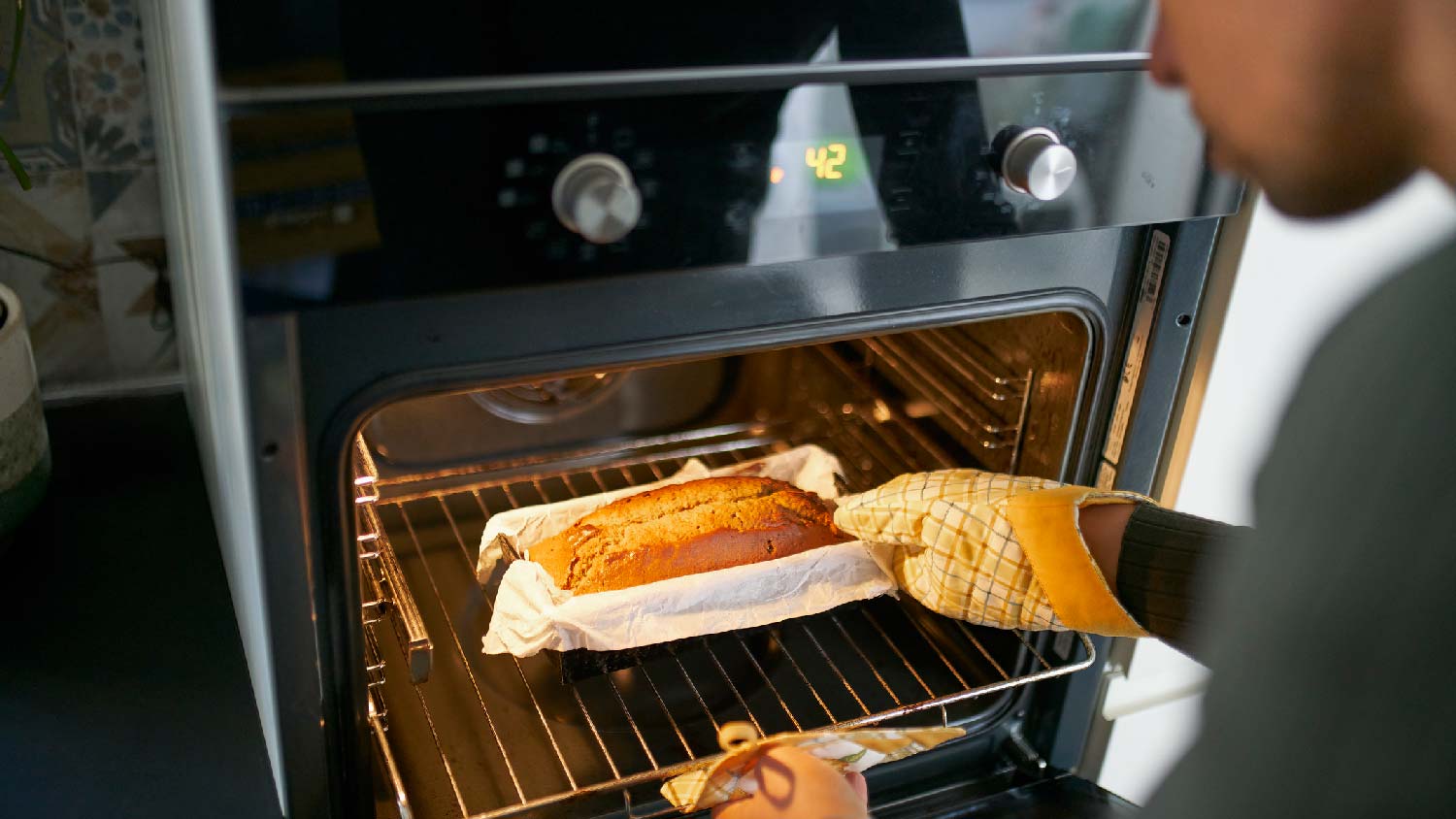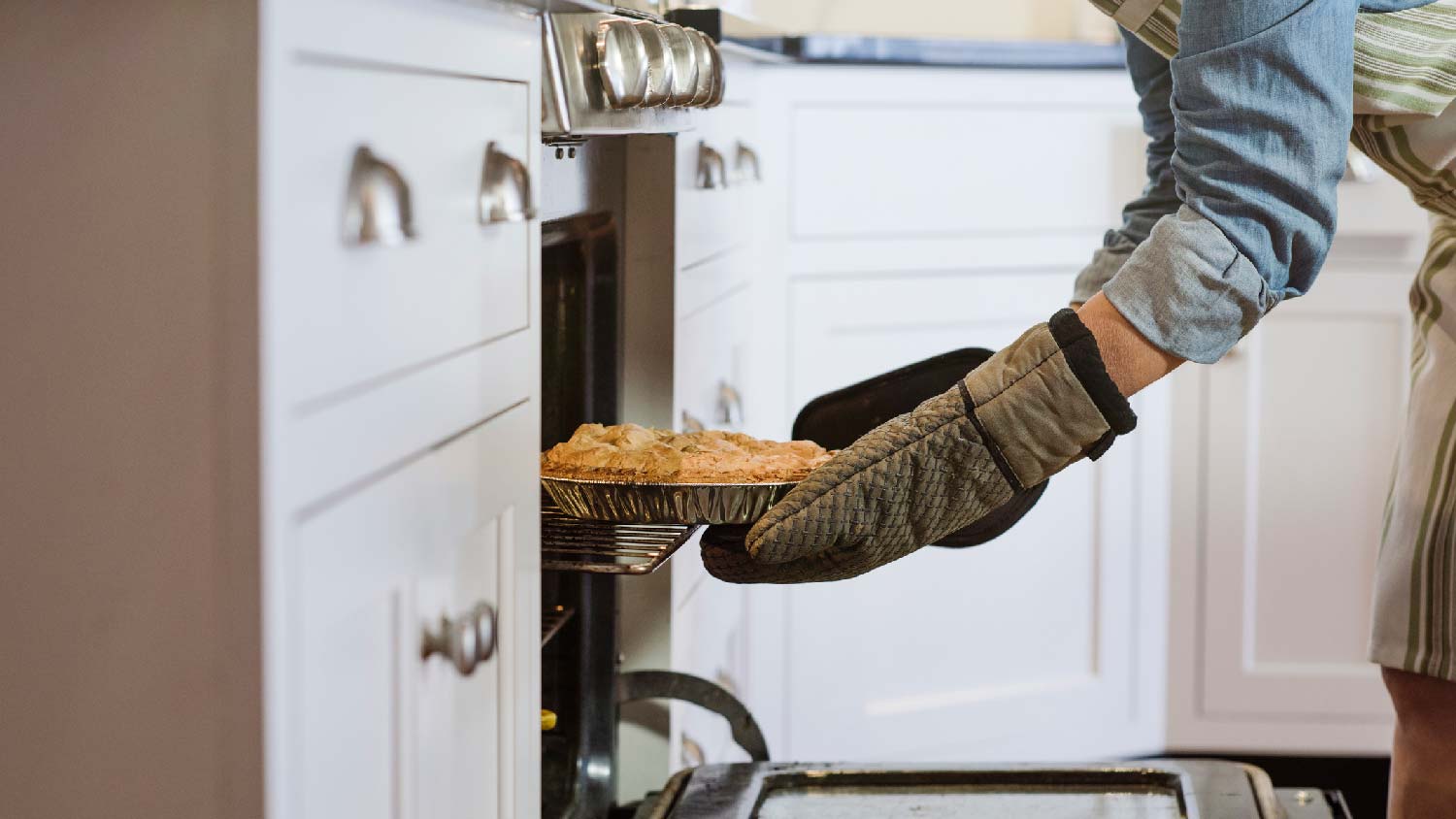Why Is My Washer Not Draining? 4 Causes and Solutions
Figure out what’s causing your soggy situation


Your washer is likely not draining due to a clogged drain hose.
Other causes of drainage issues include faulty pumps and lid switch issues.
Professional washing machine repair costs an average of $125 to $450.
When you’re met with a tub full of water instead of a finished cycle, chances are there’s something up with your washing machine. There’s a reason why your washer is not draining, and the holdup could be anything from a clogged drain to a rogue sock or a pump that needs replacing. We dive into the common reasons your washer is not draining so you can move your load to the dryer without having to scoop out buckets of water in the process.
1. Clogged Drain Hose

The most common reason your washer is not draining is that you have a clogged drain hose. When lint or debris collects in your drain hose, it can block water flow from the washer tub to the hose during the spin cycle, resulting in your washed items in a pool of water.
How to Fix It
If you’re an experienced DIYer, you can unclog the drain hose yourself using a plumber’s snake. Push it through the hose until it hits the blockage, then twist the snake to break up the clog and pull the debris out with it. In some cases, you can also pour baking soda and vinegar into the hose, then flush with hot water to break up the clog. If you’re uncomfortable with DIY methods, you can call a washing machine repair expert near you.
2. Faulty Pump
If your drain hose is all clear, your drainage issue could be the result of a faulty pump. This could mean a clog in the pump, a broken belt or impeller, or a leak. Signs of a pump issue include strange noises or leaking from the washing machine when it’s running. You’ll have to take a closer look at the pump to figure out which scenario could be causing the lack of drainage.
How to Fix It
Consult your machine’s manufacturer’s instructions to see where your pump is located and what parts are included. A malfunctioning pump will need to be replaced, which you can either do yourself if you have the tools and skills, or you could call an appliance repair specialist. The cost to repair a washing machine typically falls between $125 to $450, depending on the problem.
3. Lid Switch Issue

Top loading washing machines usually have a lid switch that detects whether the lid is closed. If the lid switch is faulty or broken, your washer may not drain and sometimes won’t start.
How to Fix It
Press the lid switch to see if it’s functioning properly. If you don’t hear a click, it could be a sign that your lid switch is broken and needs to be replaced. You can do this yourself if you know what type of switch to order. Otherwise, call the manufacturer if your washer is under warranty or contact your local washing machine repair company.
4. Filter Blockage
Some washers come with a drain filter that can collect everything from lint and debris to coins and other stray objects over time. If not cleaned often, the clogged filter can prevent water from draining properly.
How to Fix It
Clear out the drain filter every 1 to 3 months, depending on how much laundry you do and how often you run loads. Most filters are located behind a small panel in the bottom front of the machine. Once removed, clean it with warm water and let it dry before putting it back in place.
When to Call a Pro
Not all repairs are equal—some, like clearing filters or drains, can be handled by experienced DIYers, while others should be left to a licensed professional who fixes washing machines. If you lack the time, tools, and background to replace a part yourself, it’s best to hire an expert to do it for you. This way, the drainage problem is fixed correctly the first time around.
Frequently Asked Questions
You can empty a washing machine full of water by scooping the water out with buckets or by utilizing your drain hose. To use your drain hose, you’ll need to unplug the machine and turn off the water supply, then place a bucket under the hose, remove the hose from the machine and let the water drain into the bucket.
There are several indicators that your washing machine’s drain pump is bad, including incomplete cycles, water not draining, lack of spinning, a foul odor when the machine is running, and a loud grinding or buzzing noise when the pump is trying to move water down the drain.





- Appliance Repair Companies
- Washing Machine Repair
- Dryer Repair
- Refrigerator Repair
- Dishwasher Repair
- Oven Repair
- Wood & Pellet Stove Repair
- Freezer Repair Services
- Wood Stove Services
- Gas Stove Repair
- Emergency Appliance Repair Companies
- Ice Maker Repair
- Gas Appliance Repair
- GE Appliance Repair
- GE Refrigerator Repair
- GE Dryer Repair
- GE Dishwasher Repair
- GE Washing Machine Repair
- Samsung Appliance Repair
- Samsung Refrigerator Repair
- Samsung Dryer Repair
- Samsung Washer Repair
- Samsung Dishwasher Repair
- Samsung Oven Repair
- Whirlpool Repair
- Whirlpool Refrigerator Repair
- Whirlpool Washer Repair
- Whirlpool Dryer Repair
- Whirlpool Oven Repair
- Maytag Appliance Repair
- Maytag Refrigerator Repair
- Maytag Washer Repair
- Maytag Dryer Repair
- Maytag Dishwasher Repair
- Kitchenaid Appliance Repair
- Kitchenaid Oven Repair
- Kitchenaid Refrigerator Repair
- Kenmore Appliance Repair
- Kenmore Dishwasher Repair
- Kenmore Washer Repair
- Kenmore Dryer Repair
- LG Refrigerator Repair
- Bosch Appliance Repair
- Kenmore Refrigerator Repair
- LG Appliance Repair Services
- GE Microwave Repair
- Electrolux Appliance Repair
- Electrolux Washer Repair
- Kitchenaid Dishwasher Repair Services
- Wood Stove Inspection
- Dishwasher Installation
- Trash Compactor Repair










